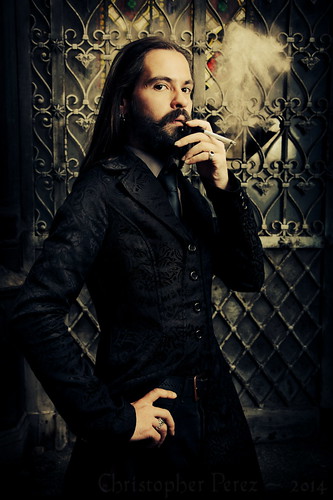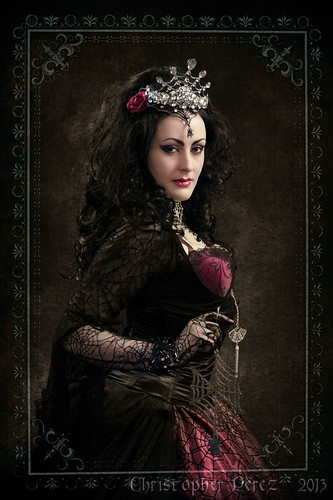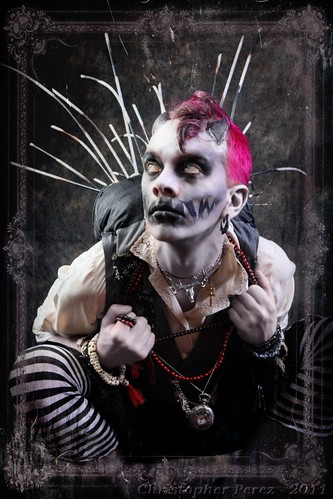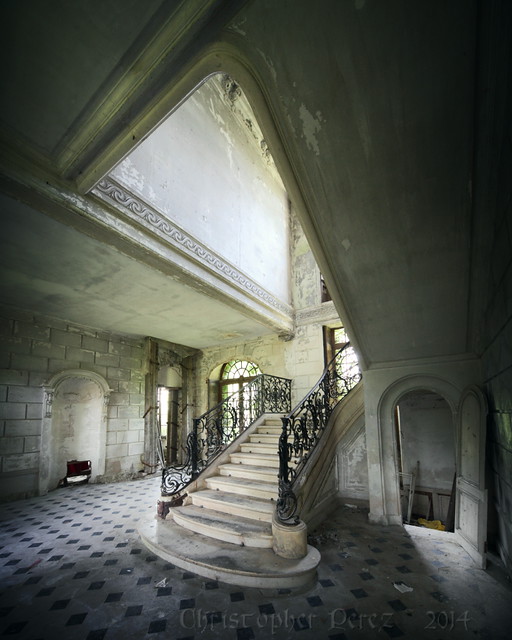I love working with creative people. Absolutely love it. In fact, I
rely on you because I don't have the resources you might to create
amazing outfits or to find wonderful settings.

My wife and I (I include my wife in this as she is my assistant in the studio and on many location shoots) recently experienced something that made me realize it would be helpful to clearly articulate how I work in a collaborative setting.
I bought three hours of time in a studio hoping to get a couple solid hours of camera-work with a creative person. I had several ideas and themes to explore. Alas, our subject was a couple hours late. I really wanted to work with this person but there was not time left. Literally. We needed to be out of the room within an hour and the subject was not camera-ready.
To avoid tears and drama here is how I work.

I like to trade my photography time for a subject's talent. If money needs to change hands, I like to negotiate that well ahead of a shoot.
After talking through an idea and agreeing on a general theme I negotiate with you the time and place for creating images.
If we are working in a studio I need to make an appointment with the owner for a room.
I've found that three hours room rental works well for many shoots. Once set, there is no changing as the studio is busy and it's difficult for them to accommodate last minute changes. So I try to be as clear as possible when we negotiate time and place. Additionally, I like to negotiate who will pay what portion of the studio rental. Three hours is approximately 50Euros.

We trade mobile numbers so we can text in the event something has changed at the last minute, or if someone needs help finding the location.
Upon entry into the studio space my wife and I take 15 minutes to get settled, to greet our subject(s) and to set up the portable studio (lights, backdrop, camera). Once everything is in place (in 15 minutes) the shooting can begin.
I realize that some subjects require a little time to finish getting made up or getting into their outfits. I can be pretty flexible about the time these kinds of things take, particularly for the more complex themes or extreme implementations, but I like to negotiate this too as I'm sensitive about the amount of time we can get actually shooting.
Once we're all "camera-ready" and the shooting begins it takes me in my artist's way of working about 20 minutes for everything to start "falling into place." Within an hour of entering a studio space all parties are "rocking and rolling.
I've found that talented subjects can bring one and no more than two outfit changes. It's a little tight, but after two+ hours of shooting, we have a lot of material to work with.
Which is another thing to point out: I like to shoot a lot. It's how I think. It's how I work. It's how I begin to "see" a final result. Again, this is why I tend to be sensitive about the amount of time we can spend together actually shooting.

After we are done it takes my wife and I 10 minutes to knock down the studio. For this we need to wrap things up no later than ten minutes prior to the end of our studio space rental time.
If any part of the team can't keep a commitment, it can really impact the success of a shoot. This is why ahead of time negotiation is so important to me. I rely on all team members to know what they are capable of and to be honest about what they can and cannot do.
These things hold true whether money changes hands or not.
Working this way allows all parties to come away with pretty amazing images. It's taken me years to hone this approach, but it's pretty successful. Professional results come from taking a professional approach with professional scheduling and professional execution. It enables success in ways we seldom foresee.
I look forward to working with you.


My wife and I (I include my wife in this as she is my assistant in the studio and on many location shoots) recently experienced something that made me realize it would be helpful to clearly articulate how I work in a collaborative setting.
I bought three hours of time in a studio hoping to get a couple solid hours of camera-work with a creative person. I had several ideas and themes to explore. Alas, our subject was a couple hours late. I really wanted to work with this person but there was not time left. Literally. We needed to be out of the room within an hour and the subject was not camera-ready.
To avoid tears and drama here is how I work.

I like to trade my photography time for a subject's talent. If money needs to change hands, I like to negotiate that well ahead of a shoot.
After talking through an idea and agreeing on a general theme I negotiate with you the time and place for creating images.
If we are working in a studio I need to make an appointment with the owner for a room.
I've found that three hours room rental works well for many shoots. Once set, there is no changing as the studio is busy and it's difficult for them to accommodate last minute changes. So I try to be as clear as possible when we negotiate time and place. Additionally, I like to negotiate who will pay what portion of the studio rental. Three hours is approximately 50Euros.

We trade mobile numbers so we can text in the event something has changed at the last minute, or if someone needs help finding the location.
Upon entry into the studio space my wife and I take 15 minutes to get settled, to greet our subject(s) and to set up the portable studio (lights, backdrop, camera). Once everything is in place (in 15 minutes) the shooting can begin.
I realize that some subjects require a little time to finish getting made up or getting into their outfits. I can be pretty flexible about the time these kinds of things take, particularly for the more complex themes or extreme implementations, but I like to negotiate this too as I'm sensitive about the amount of time we can get actually shooting.
Once we're all "camera-ready" and the shooting begins it takes me in my artist's way of working about 20 minutes for everything to start "falling into place." Within an hour of entering a studio space all parties are "rocking and rolling.
I've found that talented subjects can bring one and no more than two outfit changes. It's a little tight, but after two+ hours of shooting, we have a lot of material to work with.
Which is another thing to point out: I like to shoot a lot. It's how I think. It's how I work. It's how I begin to "see" a final result. Again, this is why I tend to be sensitive about the amount of time we can spend together actually shooting.

After we are done it takes my wife and I 10 minutes to knock down the studio. For this we need to wrap things up no later than ten minutes prior to the end of our studio space rental time.
If any part of the team can't keep a commitment, it can really impact the success of a shoot. This is why ahead of time negotiation is so important to me. I rely on all team members to know what they are capable of and to be honest about what they can and cannot do.
These things hold true whether money changes hands or not.
Working this way allows all parties to come away with pretty amazing images. It's taken me years to hone this approach, but it's pretty successful. Professional results come from taking a professional approach with professional scheduling and professional execution. It enables success in ways we seldom foresee.
I look forward to working with you.


